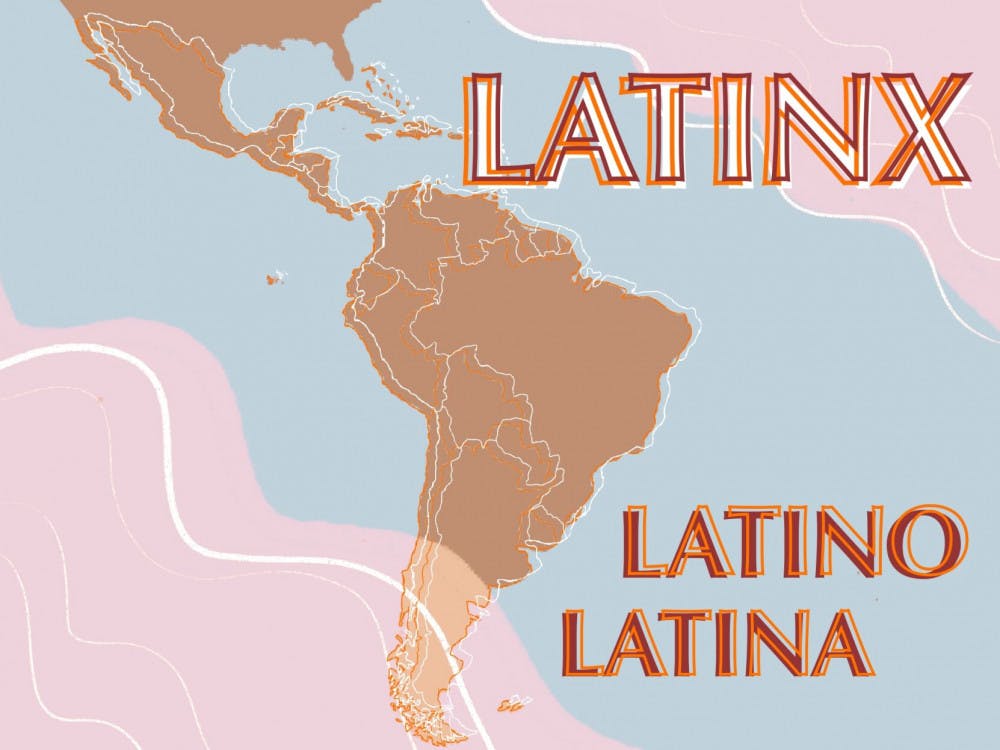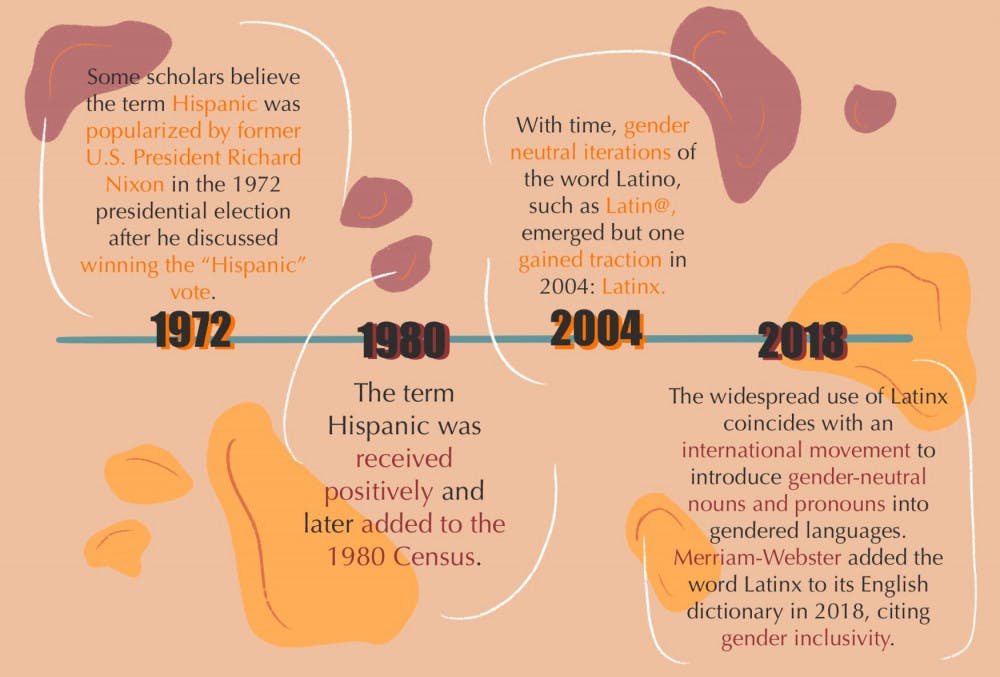
Choosing one word to define the lived experience of millions of people isn’t an easy task.
Some people of Latin American or Spanish descent opt for Hispanic, others Latino, Latina or Latinx. There are also people who shy away from using any pan-ethnic term because they feel it erases their national identity. To some, the introduction of the term Latinx in everyday speech is just an attempt to force U.S. ideals into the Spanish language. For others, it signals a genuine attempt at fostering inclusivity.
Jessi Aaron, a professor skilled in sociolinguistics from the UF Spanish department, sees nuance in these terms.
“Using a word like that can be powerful to unite people as a front,” Aaron said. “But at the same time, it can also erase huge differences in Spanish-speaking populations.”
A pan-ethnic term associates different ethnic groups together based on geographic, linguistic, religious or racial similarities, she said. People from the Latin American diaspora typically identify themselves with two major pan-ethnic terms: Hispanic and Latino.
Latino, the male default of the term, has been a term used to describe people from the Spanish and Portuguese-speaking countries of Latin America, though it excludes those from Spain and Portugal, Aaron said.
Some scholars believe the term Hispanic was popularized by former U.S. President Richard Nixon in the 1972 presidential election after he discussed winning the “Hispanic” vote. The term was received positively and later added to the 1980 Census.
With time, gender neutral iterations of the word Latino, such as Latin@, emerged but one gained traction in 2004: Latinx.
At UF, this term is used in student organizations like Hispanic-Latinx Affairs and the Caribbean, Latinx, and Latin American Exchange.
The widespread use of Latinx coincides with an international movement to introduce gender-neutral nouns and pronouns into gendered languages, Aaron said. Merriam-Webster Dictionary added the word Latinx to its English dictionary in 2018, citing gender inclusivity.

However, some oppose these changes. The Real Academia Española, the longstanding official authority on Spanish language and grammar, publicly denied the attempt to undo the gendered structure of the language that same year.
To some opponents, the use of an x as a gender-neutral alternative in Spanish will change words like “amigos” to “amigxs,” making them more difficult to pronounce.
Another alternative that better follows the structure of Spanish and is also commonly used is an o-to-e substitution instead of o-to-x for words like amigos, Aaron said.
One instance of resistance to the gendered structure of Spanish that stands out to Aaron is when a committeewoman in Spain caused controversy for intentionally using the word “miembra.” The only grammatically correct form for the word is the masculine “miembro.”
While one in four U.S. Hispanics have heard of the term Latinx, only 3% of them actually use it, according to a 2020 Pew Research Center study. Women aged 18 to 29 are most likely to identify with the term.
The small percentage of people who use Latinx may be attributed to the organized opposition to use of the term in English and Spanish.
To Kaylinn Escobar, an 18-year-old UF public health freshman, using the term Latinx is an easy switch to be more inclusive of the LGBTQ+ community.
“When I’m talking about a group of people, I prefer the term Latinx,” she said. “If it's in an attempt to make non-binary people feel comfortable, why would you take away someone's comfort just because you are opposed to the idea of it?”
Many indigenious languages utilize gender neutral identifiers, Escobar said, so this is a natural extension.
When Luis Murillo, a 19-year-old UF industrial and systems engineering freshman, first heard of the term about five years ago, he dismissed it as linguistic imperialism.
But after observing gender dynamics in school and educating himself on LGBTQ+ issues, he now favors using it. He said he’s more likely to use the term in a formal setting where he knows people of varying gender identities will be present but still identifies with Latino.
Catherine Gomez-Thompson, an 18-year-old UF art freshman, uses both Hispanic and Latina to define her identity as a Colombian American woman.
“I enjoy using these terms to identify myself because it makes me feel like I belong to a community,” Gomez-Thompson said. “When I discovered Latinx at a speech and debate competition, I thought it was brilliant.”
Gomez-Thompson feels that addition of the x will help the Latin American community be accepting of more gender identities and help undo the patriarchal nature of Spanish-speaking culture.
“It comes down to how people are raised and how they grew up,” she said. “If we start now with the new generation, the word will become more widely used in the future.”

Alan Halaly is a third-year journalism major and the Spring 2023 Editor-in-Chief of The Alligator. He's previously served as Engagement Managing Editor, Metro Editor and Photo Editor. Alan has also held internships with the Miami New Times and The Daily Beast, and spent his first two semesters in college on The Alligator’s Metro desk covering city and county affairs.




